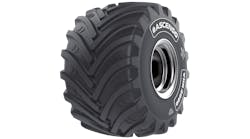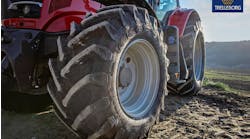The domestic medium truck tire retread market is on track to outperform 2022, but gains will be relatively modest. That’s what Jason Roanhouse, vice president of operations of Bridgestone Americas Inc.'s Bandag business, predicts.
Around 15.5 million medium truck tire retreads were produced in the United States during 2022. “I think a repeat of (that) in 2023” is likely, with an increase of as many as 500,000 units possible, “based on the data we have,” says Roanhouse.
A return to what he calls “stable supply” in both raw materials and tread production after a tumultuous couple of years has bolstered the market.
“When you encounter supply challenges, you end up with a casing backlog and upstream challenges in both dealer inventories and the manufacturer’s ability to serve the market.
“You really have to fill the bucket from the bottom. Casings that are waiting to be retreaded have to catch up. Then dealer inventory and production can stabilize. And finally, our inventory is replenished and fill rates recover.”
Casing supply now appears more than adequate to support increased production, says Roanhouse.
“During the period when the industry had supply challenges, retreaders were matching the availability of treads in the more common widths with the casings in their inventories to maximize our ability to supply the market. Since then, we’ve been able to catch up on inventories, not only for ourselves, but for our dealers.
“Retreading tends to be a bit counter-cyclical,” he explains. “As fleets look at the availability of equipment and capacity utilization, retreading can benefit from extended (equipment) trade cycles and additional replacement opportunities, particularly in power units. If overall capacity is down, the total market declines in response to available freight.
“The service sector for Bandag - and retreading, in general – is a key contributor to our business. Continuing to focus on areas like waste and recycling, package delivery and other service-based transportation (clients) can have a large impact on demand for retreading.
“I can only speak for Bandag, but there have been a lot of growth opportunities for us” during 2023. “Anytime the trade cycle is extended, it offers the opportunity” for additional retreading.
“When we see trade cycles lengthen, this always drives the retread side of the equation,” says Roanhouse, who adds that this “also has an effect on the number of casings coming in, so there’s a balance” that must be achieved.
Big investment
Bridgestone Americas Inc. recently broke ground on a $60 million expansion of its Bandag tread rubber manufacturing plant in Abilene, Texas. The capital infusion will increase the plant’s output by 16% and will add 50,000 square feet onto the facility. (The 52-year-old plant currently spans 200,000 square feet.)
The investment, which includes construction of new mixing operations, is due to “growing demand for the company’s retread products,” according to Bridgestone officials.
It will “allow us to process tougher and more complex compounds,” says Roanhouse. “As products continue to evolve from a material science standpoint, (advanced) mixing capabilities are needed and other technological advancements are needed.”
Roanhouse calls the investment “one example of Bridgestone’s commitment to Bandag and the retread industry, overall. There is still belief in the strength of the market and a belief in the need to advance technologically” in order to better serve fleets.
“I don’t want to get too far ahead of myself in the final quarter” of 2023, he cautions. “Traditionally, the retread market has accelerated through October as customers ramp up through the busiest months.”
Tire replacement, he says, typically remains robust through November.
“Our dealer partners have overall seen higher production in 2023, with a few worrisome moments where market softness or other variables impacted fleet demand. But overall, we’re on track to outpace 2022.”




